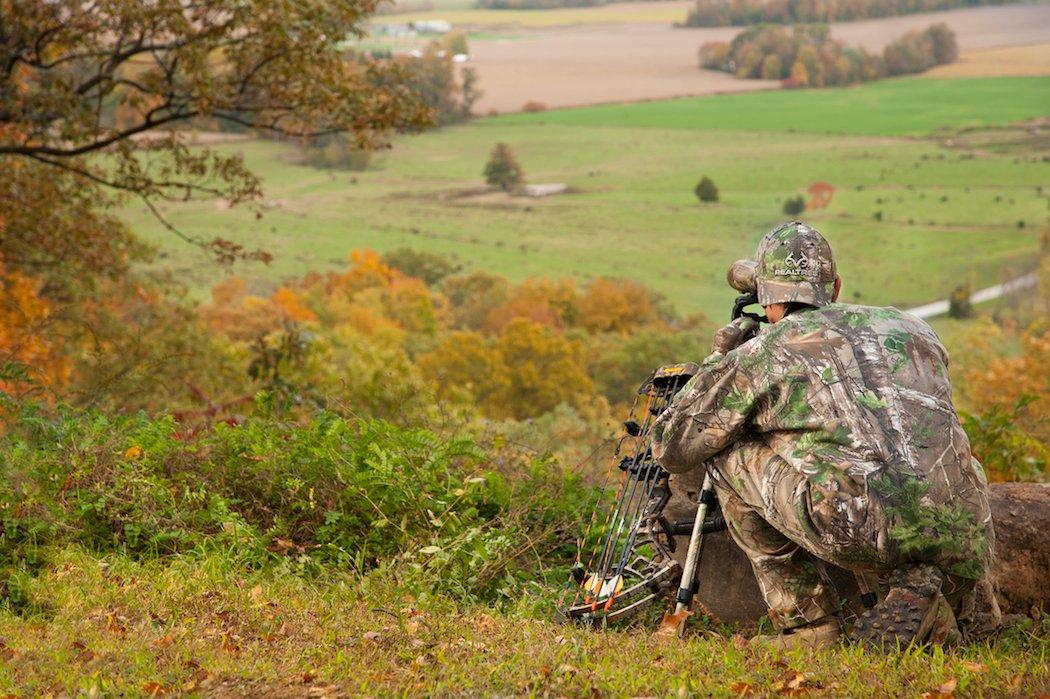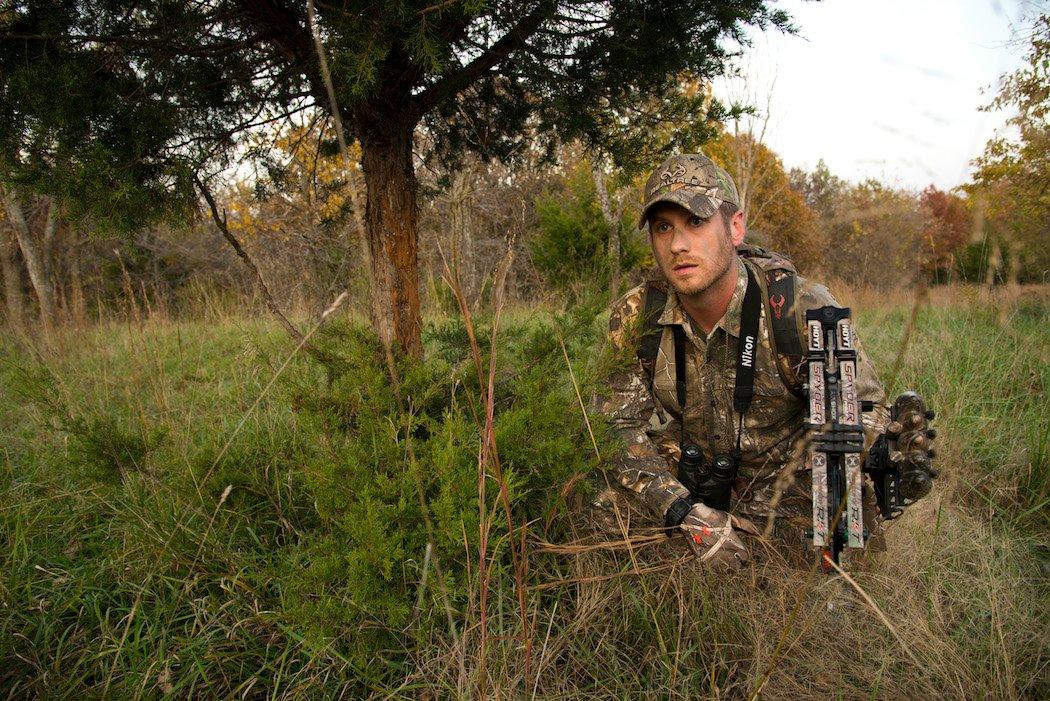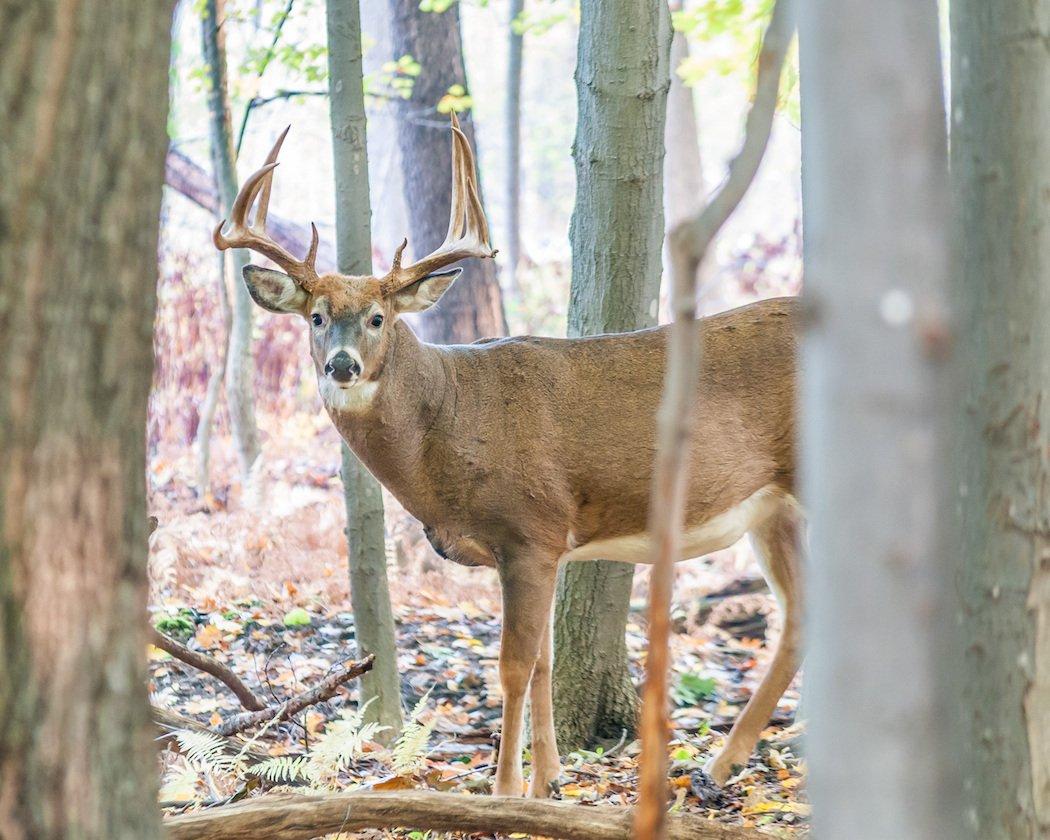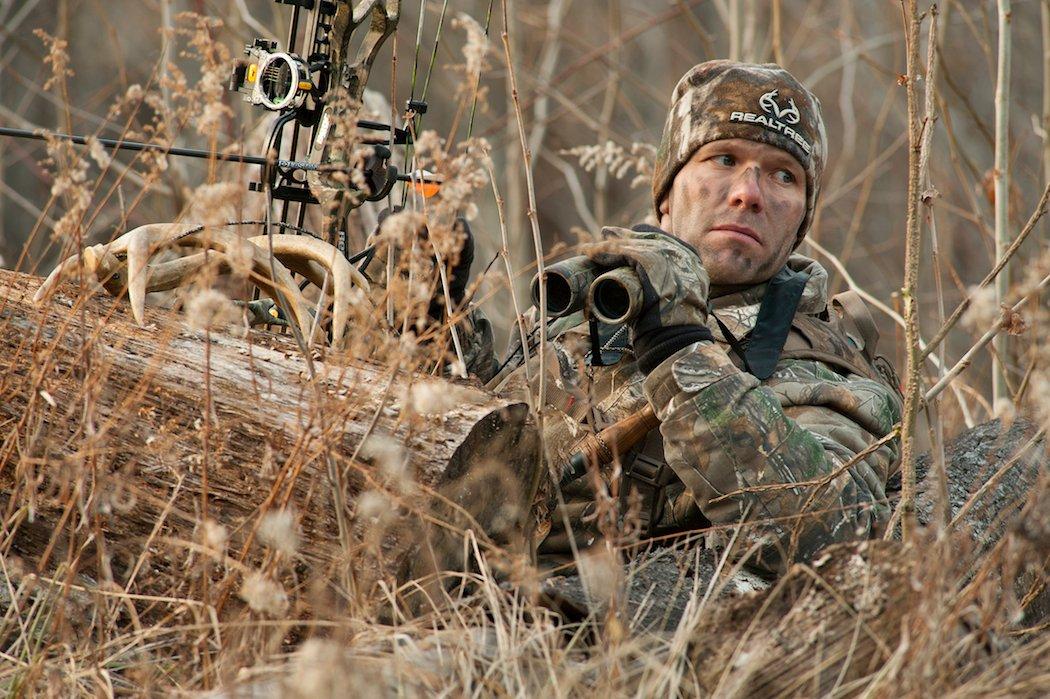YOU DON'T NEED A TREESTAND TO KILL A DEER
It is an indisputable fact: Bowhunting whitetails from a treestand provides many advantages. An elevated perch typically gives bowhunters a wider field of vision and gets scent up off the ground. But bowhunters who only hunt from a tree and never experience the absolute thrill of being eye-level with a heavy-racked buck are missing out on one of the best experiences in the deer woods.
NATURAL BLINDS
Long before portable blinds came along, early bowhunters often used natural hides such as downed trees, rock outcroppings, thick stands of brush and foliage, or other areas in which to find concealment. This is still a viable alternative to a portable blind, although it does take more time and effort to erect. Plus, it's obviously not very portable.
The technique for a ground blind is exactly the same as for a treestand. The hunter chooses a location where deer are expected to travel and sets up a blind in a strategic location. Take into account wind and traditional travel patterns. Consider thermals. They're even more of a factor when hunting from the ground.
Now, brush in. Match brush you use that blends with the surrounding cover. For example, if setting against a cedar tree, cut cedar branches to brush in with.
COMMERCIAL BLINDS
The proliferation of portable hunting blinds in the outdoor market has made blind hunting much easier than in the past. Over the past 20 years, numerous manufacturers have begun making portable or pop-up blinds in a wide variety of styles. These blinds set up in minutes and come in a wide variety of camouflage patterns to match most any habitats.
Hunting in a blind is much like hunting from a treestand in that hunters must scout diligently or find themselves out of bow range or on the wrong side of the wind. Blinds help conceal movement, but sounds and scent are at ground level. Hunters must exercise every bit of stealth possible to achieve success. Plus, the blind needs to be installed and brushed in long before the hunt in order to allow area whitetails to become accustomed to it.
Blinds provide an excellent method for the elderly, persons with disabilities, or others who cannot or choose not to climb to have the opportunity to hunt. They are also a great option in areas where there are no suitable trees for a stand. Those reasons aside, hunting from a blind is just plain fun...and a great change of pace.
SPOT AND STALK
Probably the least popular method of ground hunting for whitetails is the spot and stalk, mainly due to the habitats where whitetails are predominantly found. However, it is a very popular method for western big game and is used by whitetail hunters in areas that are not heavily forested. Heavy foliage and thick forests severely limit the spot component of this method.

Once a deer is spotted, the hunter then must determine if a stalk is feasible. There must be an accessible and quiet passageway into bow range, and most importantly, it must be from downwind. Bedded deer are extremely wary, and they typically have nothing to distract them from being wary such as they do when they are walking and browsing or otherwise engaged in something other than just lying down, scanning their surroundings for approaching danger.
To make a successful stalk, a bowhunter must not only choose a good path to the deer but also execute the stalk with the utmost stealth. One snapped twig or kicked rock will give you away. Walk quieter by removing boots and wearing only socks. If this seems a bit too extreme, moccasin-style shoes may be a safer and warmer alternative.
STILL HUNTING
This is by far my favorite way to hunt from the ground. It is proactive and is not just a waiting game. The hunter controls the outcome in far greater capacity than any type of ambush-style hunting.
Still hunting is not spot and stalk, although at times a still hunt turns into one. Instead of remaining stationary, spotting an animal first, and then deciding how best to plan an approach, the hunter sets out to stealthily slip through the woods and hopefully locate a deer without being detected. Once a deer is encountered, the idea is obviously to get within bow range for a shot. On a moving deer, this is accomplished by getting in a position to intercept the deer along its chosen path. If the deer is bedded or otherwise stationary, the still hunt then becomes a spot and stalk.

Still hunting should obviously always be directly into the wind or into a crosswind. My preference is a crosswind. It ups the percentage of intercepting deer moving into the wind. Hunting a crosswind, I am literally working across many potential deer paths; whereas hunting directly into the wind puts me parallel with any deer moving into the wind.
Regardless of chosen path, the hunter must move extremely slowly and quietly, using the habitat as cover. Plan ahead where to stop. Try not to stop in the open. Move from one tree to the next or stop behind other cover. Getting caught out in the open is not good with approaching deer.
If the ground is dry and noisy, my method of movement—funny as it may sound—is what I call the squirrel tactic. Ever notice how squirrels move? Usually it is three quick hops and stop. If the forest floor is covered in crunchy leaves, it is impossible to still hunt quietly. I'll try to plan my forward movement to take three quick steps and stop, thus mimicking a squirrel as much as possible.
GET GROUNDED








